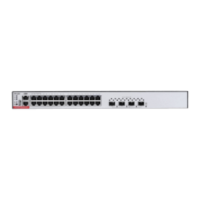Configures the GR period. The GR period is the longest interval that
lasts from the moment when OSPFv3 fails to the moment when
OSPFv3 gracefully restarts.
The GR period is in the range from 1 to 1800 in the unit of seconds.
The default is 120.
Configures the topology change detection. Once the topology change
is detected, the device will exit GR and finish the convergence,
This function is enabled by default after GR is enabled.
GR is configured based on the OSPFv3 instance. Different instances could be configured with
different parameters.
Use this command to configure the GR period. The GR period is the longest interval that lasts from
the moment when OSPFv3 fails to the moment that OSPFv3 gracefully restarts. In this period, the
device will perform link reconstruction to restore OSPFv3. When the GR period expires, OSPFv3
exits GR and finishes regular operation.
To enable the GR function and set the GR period to the 120 seconds, use the graceful-restart
command. To modify the GR period, use the graceful-restart grace-period command. Topology
stability is indispensable for uninterrupted forwarding. If topology changes, OSPFv3 finishes
convergence instead of continuing GR to avoid long time interruption
1) Disabling the topology change detection: If the topology cannot converge in time in the hot backup
process, the long term forwarding interruption may occur.
2) Enabling the topology change detection: Forwarding interruption may occur but the interruption
time is much shorter than the time it takes to disable topology detection.
It is not recommended to disable the topology change detection. In some scenario where long term
forwarding interruption does not occur, disabling the topology change detection minimizes the
forwarding interruption time.

